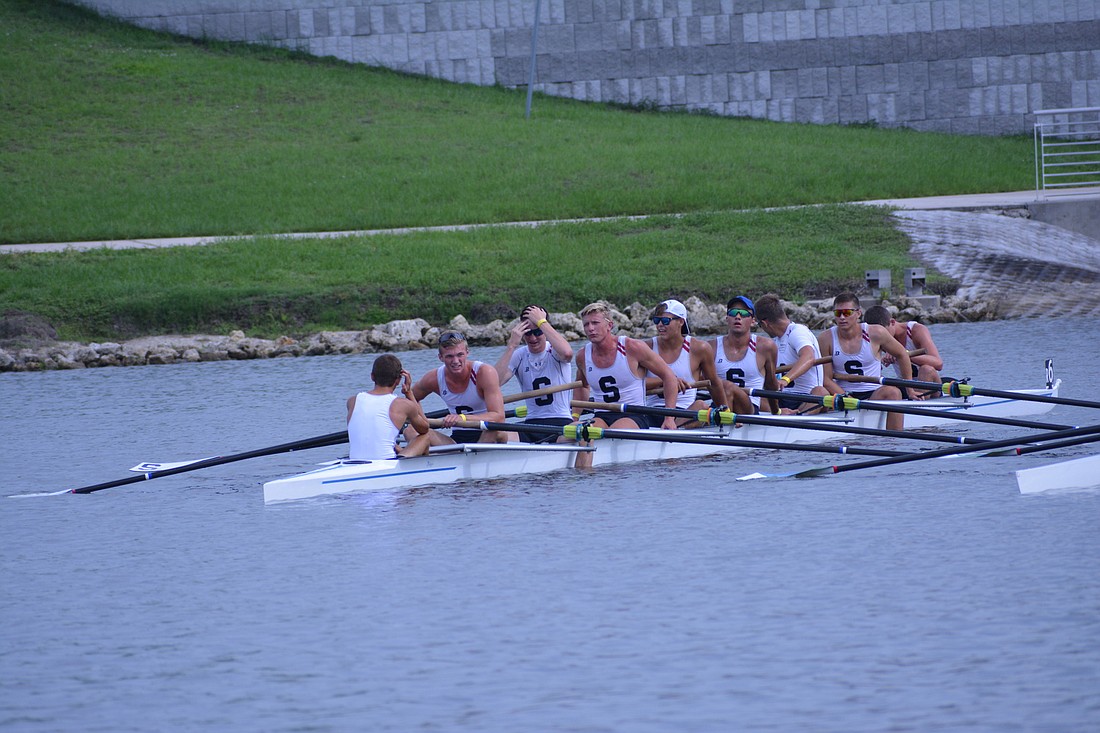- November 24, 2024
-
-
Loading

Loading

A common thread emerged with each of the few experiences I’ve had at rowing events.
I realize I am not sure if there is a proper way to view the sport.
The experiences have been enjoyable, but I don’t have a clue what I should be doing as a spectator. It’s kind of hard to absorb in person, where I don’t have an expert commentator explaining it.
My modus operandi had been to watch the shell in front, with an eye on any shells gaining speed. I usually pick a spot for each race and then I stick to it. Being at the finish line, as I usually am, is great for frantic finishes, but sometimes the race is a blowout. If a shell gets a fantastic start, the race is over well before the finish line, and the drama (and my ability to care) vanishes before the shells come into view.
With the World Rowing Championships coming to Nathan Benderson Park in September, I thought I should get more acquainted with the sport and see if I can find a way to better watch it in person.
The USRowing Youth National Championships, held at the park June 9-11, were a chance to do just that.
I decided to chat with rowers to find out what they watch during a race. The first person I talked to, Sarasota Crew senior rower Isaac Ward, made me think I knew more than I thought I did.
“I just look at whoever’s in first place,” Ward said. “Also when the boats start their sprint. You’ll see the boat surge and pick up speed.”
Ward didn’t quite offer the more technical analysis. Sure, watching one boat overtake another is fun, I get that, but what are the athletes in the boat doing to get that surge?
East County’s Jason Shusko, a member of Sarasota Crew’s third-place men’s 8A shell, was able to answer my questions.
“What’s most important is looking at relative speed, and how fast they (the rowers) are taking strokes,” Shusko said. “When you are watching the race, the angle is going to be off, so you can’t tell who is winning. You need to look at how the boat is moving to really get a grasp of what is happening.”
At Nathan Benderson Park, buoys are 10 meters apart. A proper stroke by each rower should carry the shell that distance, Shusko said. If it’s coming up short, it means the rowers are having a weak race. Unless, that is, their stroke rate is high enough to make up the distance.
Endurance is also a factor. A rower’s technique and power can be perfect, but if he or she cannot keep strokes consistent throughout the race, due to fatigue, it’s not easy to win. It’s a nuanced sport, much more than I previously realized.
After speaking with Shusko, I tested my new knowledge. I discovered I could tell if a shell in front was slowing due to fatigue. I could tell which shells were doomed from the start. It was still hard, however, to tell these things while looking directly at the race. It was much easier to watch races on the Jumbotron placed near the finish line.
A drone captured each race from overhead, so fans could follow the action from start to finish, and watch for the things Shusko mentioned.
Nathan Benderson Park is in a class of its own technologically, Shusko said. He called it a “privilege” to race there all the time. The screen, which was not there at previous rowing events I attended, was a great idea for the Youth Championships, but perhaps a bad omen for a particular future event at the park.
Throughout the day on June 11, the final day of the championships, swaths of people crowded the Jumbotron to watch races, even taking pictures of rowers on the screen instead of turning 90 degrees to the left and taking a nonpixelated snapshot. Last week, the NBC Sports Group and the World Rowing Federation announced an exclusive U.S. media rights agreement for NBC Sports to televise more than 10 hours of coverage from the World Rowing Championships, starting Sept. 28, when the finals begin.
Hardcore rowing fans, and family members of the rowers, are going to attend the event no matter what. I just hope, with the televised coverage, area residents still check it out live to enjoy the atmosphere created by the sport, and a world-class facility. The park remains gorgeous, and individual sects of the crowd create excitement with their support. I am certain that energy will be amplified come September. Is that enough to get green fans like myself to come? Time will tell.
My admiration of the sport continues to grow. I appreciate how much has to go right for a shell to win a race. I had fun gaining the perspective of actual rowers.
To those completely unfamiliar with the sport, it still might be a tough sell. We will see.